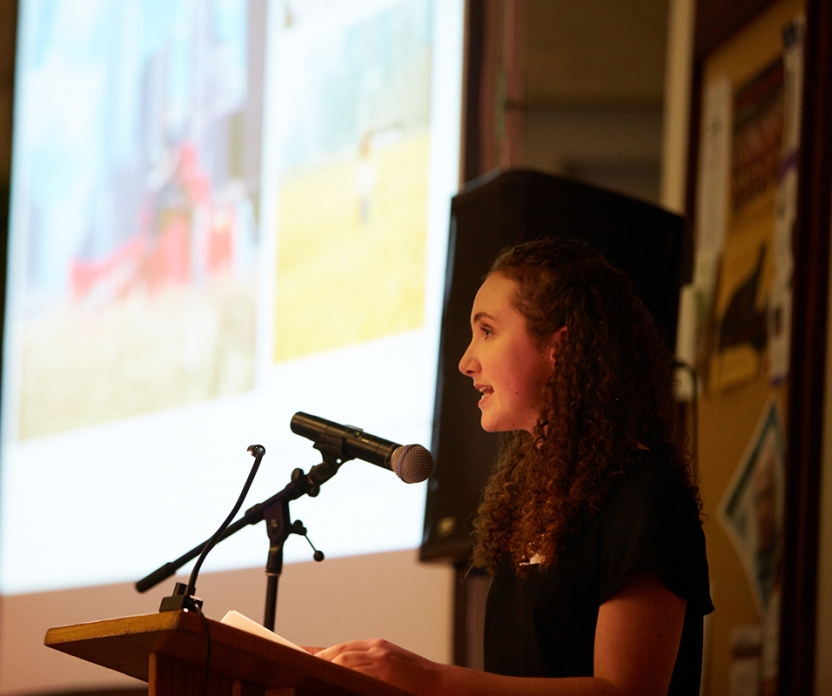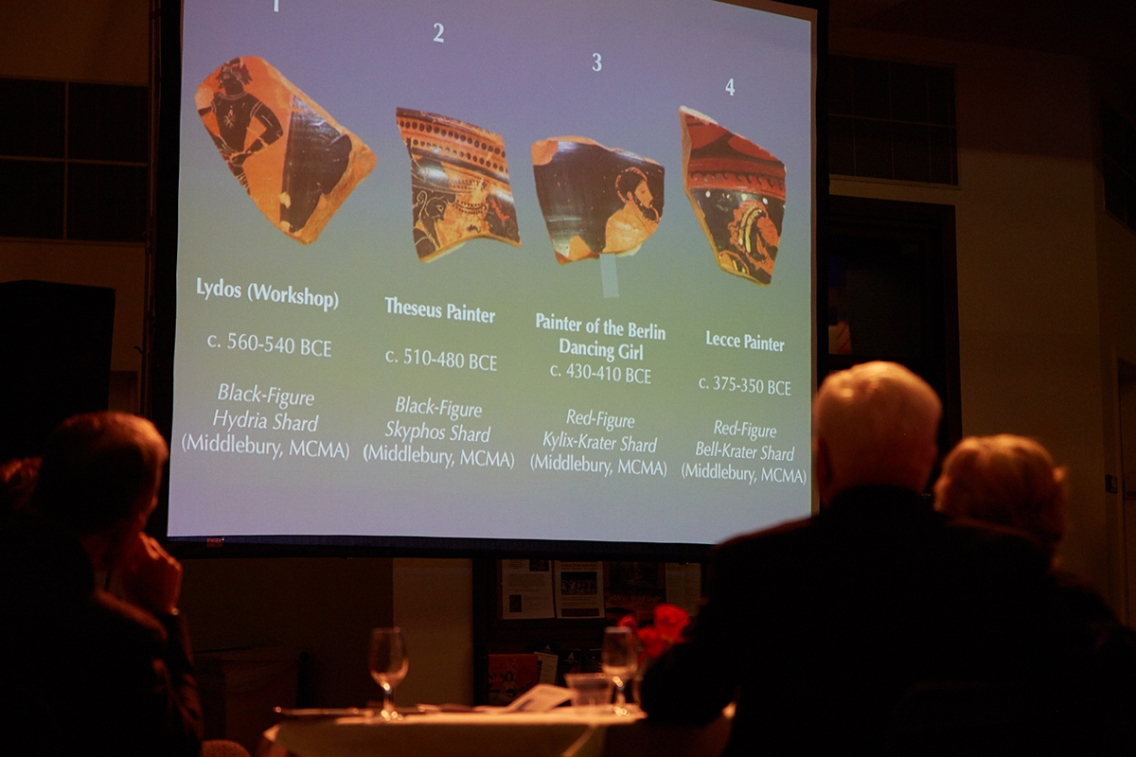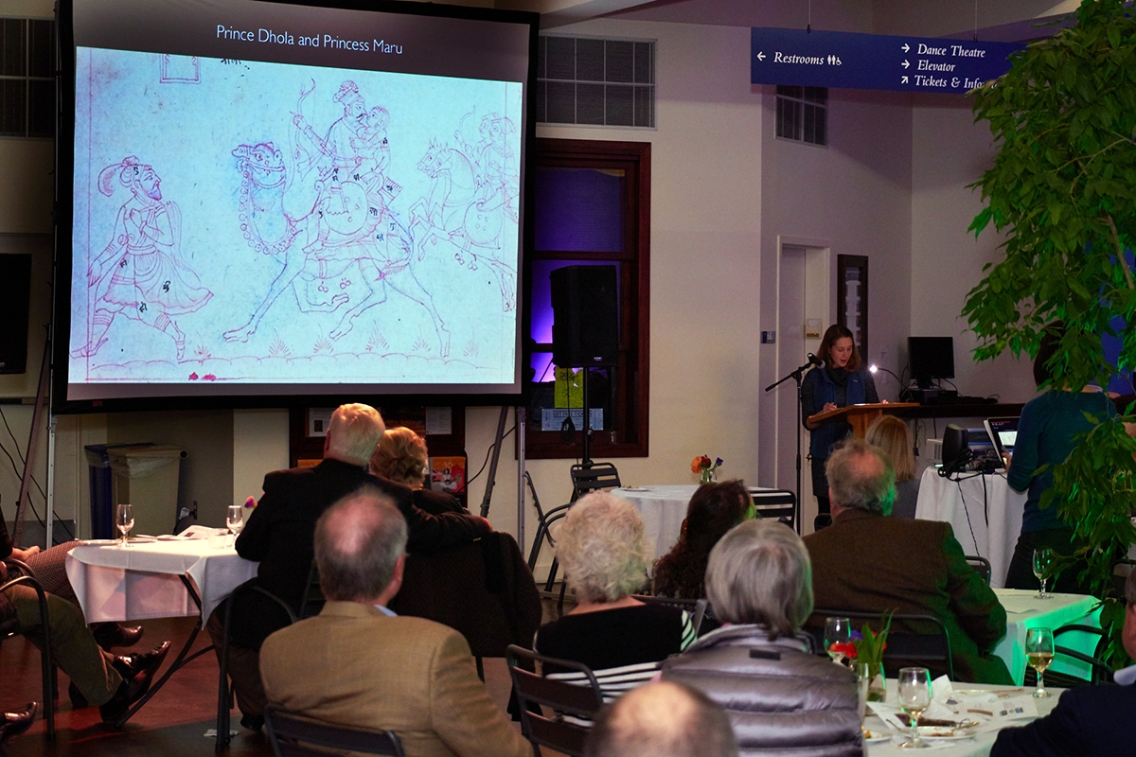A Night at the Museum

MIDDLEBURY, Vt. — Community members, curators, students, and faculty and staff gathered at the Mahaney Center for the Arts this month to cast their ballots—not for a person or candidate, but rather for a piece of artwork.
The event? The annual purchase party, during which the Friends of the Art Museum (FOAM) select a piece of artwork to purchase and give to the Middlebury College Museum of Art. In linking town and gown, and in celebrating the museum’s place as a cultural institution for the college and the surrounding community, “this event to me epitomizes what it’s all about,” said museum director Richard Saunders.
At most art museums, membership dues are used to underwrite operating expenses — but at Middlebury, a large chunk of those annual dues goes directly to the acquisition of new art. Since their inception in 1969, the Friends have given more than 80 works to the museum, and by Chief Curator Emmie Donadio’s count, this year’s party marked the 46th annual purchase party.
Of course, the purchase parties of yore looked a bit different. “Once upon a time,” Donadio said, “our art history professors went to New York in a car, put three pieces of art in the trunk, came back, and presented them at a raucous cocktail party. … Those were the good old days.”

The days of putting artwork in the trunks of cars is long past, and now, each year, FOAM considers three objects that the museum’s curators have already acquired, typically ranging in price from $10,000 to $15,000. The membership votes, and the winning object is then acquired by the Friends and given to the museum—freeing up additional funds for the winning curator to acquire another artwork.
This year’s artworks each fell under the theme of “incomplete.” The objects included four shards of Greek pottery, roughly 2,500 years old; a drawing from 17th-century India; and a triptych illustrating a conceptual land art installation undertaken by artist Agnes Denes in Finland in the 1990s.
For the first time, it was students, and not the museum’s curators, who made the pitch to the Friends for their respective pieces. Arguing for the Greek pottery shards, Victoria Villalba ’19 traced the lineage of the shards to workshops in Athens and Italy, and explained how valuable the shards are as a hands-on teaching tool.
Juliana Dunn ’19.5 introduced Tree Mountain, a living time capsule created from 11,000 trees planted on reclaimed land in Finland. The project is protected for 400 years, and will grow to form a lush, manmade virgin forest. The College recently acquired a triptych made up of two photographs and a diagram documenting the project.

Alex Gimbel ’16.5 rounded out the presentations, arguing for the Indian drawing—a preparatory “ragini” that would have been used to finish a much more elaborate painting. The image depicts a prince and princess on camelback; the two lovers have escaped the villain Umar Sumar, and are riding away in happiness. In her closing remarks, Gimbel urged the audience playfully, “A vote for this preparatory ragini is a vote for love.”
“Last call for ballots!” came the call a few minutes later, as longtime supporters and new members alike mingled over dessert, coffee, and piano music. The evening provided more than just a chance to weigh in on new artwork; for community members, it’s an opportunity to connect with museum and celebrate its work.
“In a small community, a rural farming community, it’s just wonderful to have an institution like this,” said Bridport resident Nancy Maxwell, who formerly worked as a community receptionist at the museum and is a new member of the friends organization.
Stepping to the podium, FOAM chair Mary Jo Champlin unfolded a sheet of paper. “Well, this is exciting,” she said. “Shall we start with the third runner-up?” Joking that this wasn’t a beauty pageant, Champlin jumped straight to the winner: Gimbel’s call to “vote for love” came out on top, and the Indian ragini took the popular vote.
The ragini was acquired by Sarah Laursen, the College’s curator of Asian art and an assistant professor of the history of art and architecture. Laursen spotted the ragini at Asia Week New York in March, and immediately recognized its value as a teaching tool. She put the drawing on hold almost immediately, knowing that works are snatched up quickly at the annual gathering for Asian art. So, too, did she recognize Gimbel’s gift for selling the work to the gathered FOAM members. “I knew immediately that Alex was the student for the job,” she said, following the vote.
Now that FOAM has chosen Laursen’s pick for their annual acquisition, the curator will receive $10,000 to make an additional acquisition. She intends to pick a piece of Islamic art that will complement an exhibition coming to the museum in two years.
Said Laursen, “It’s a moment when we need to appreciate Islamic culture.”
Reporting by Kathryn Flagg; photos by Todd Balfour

